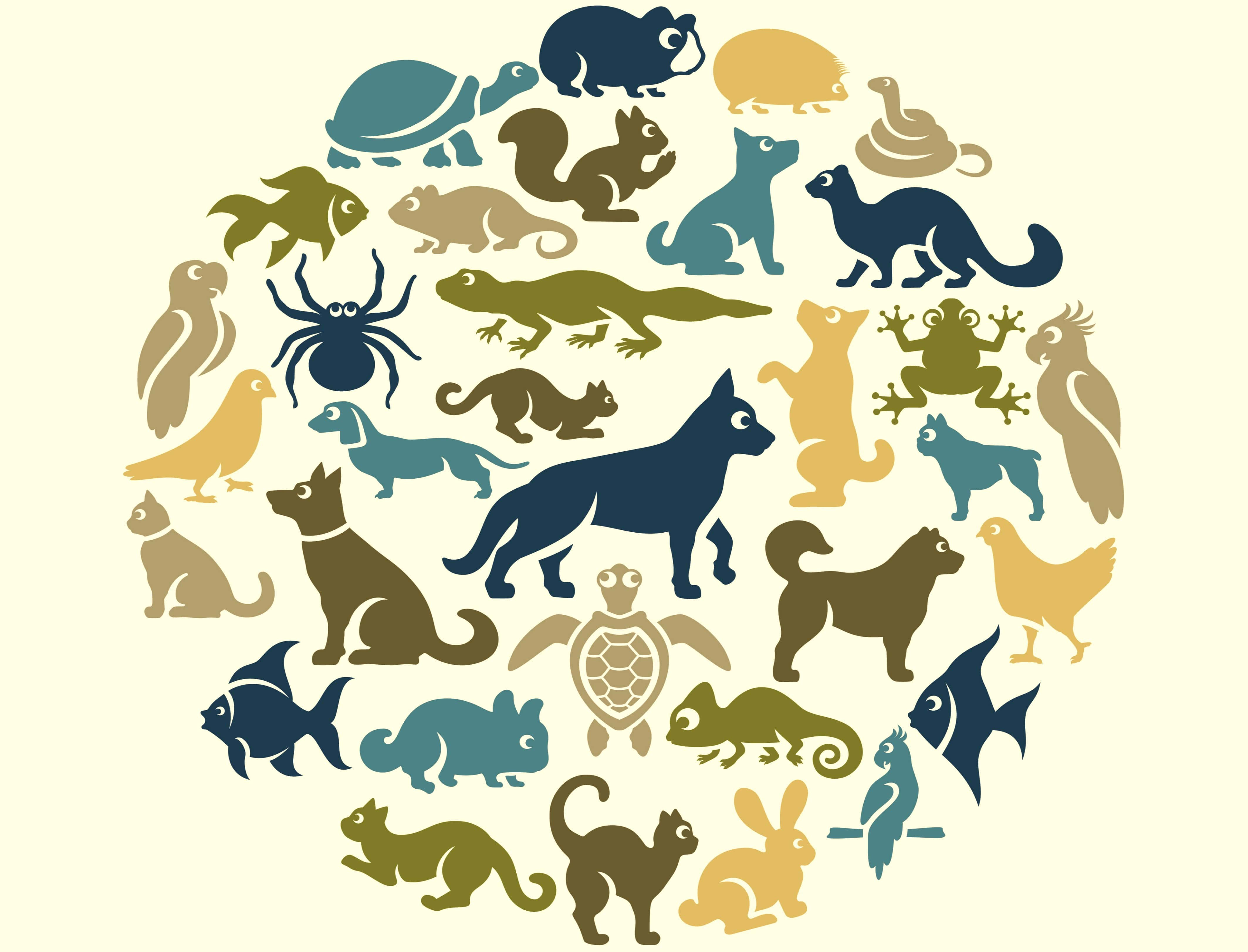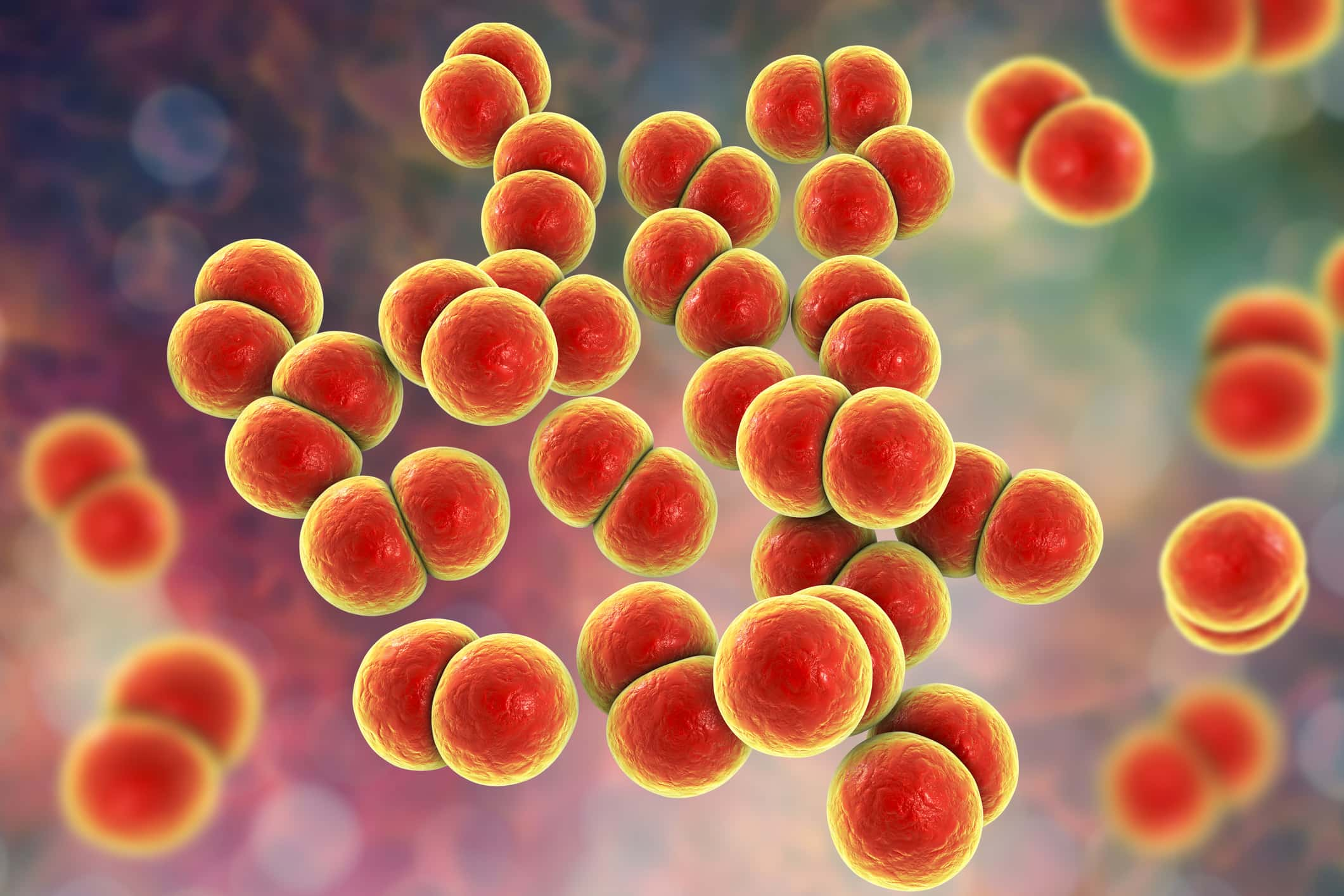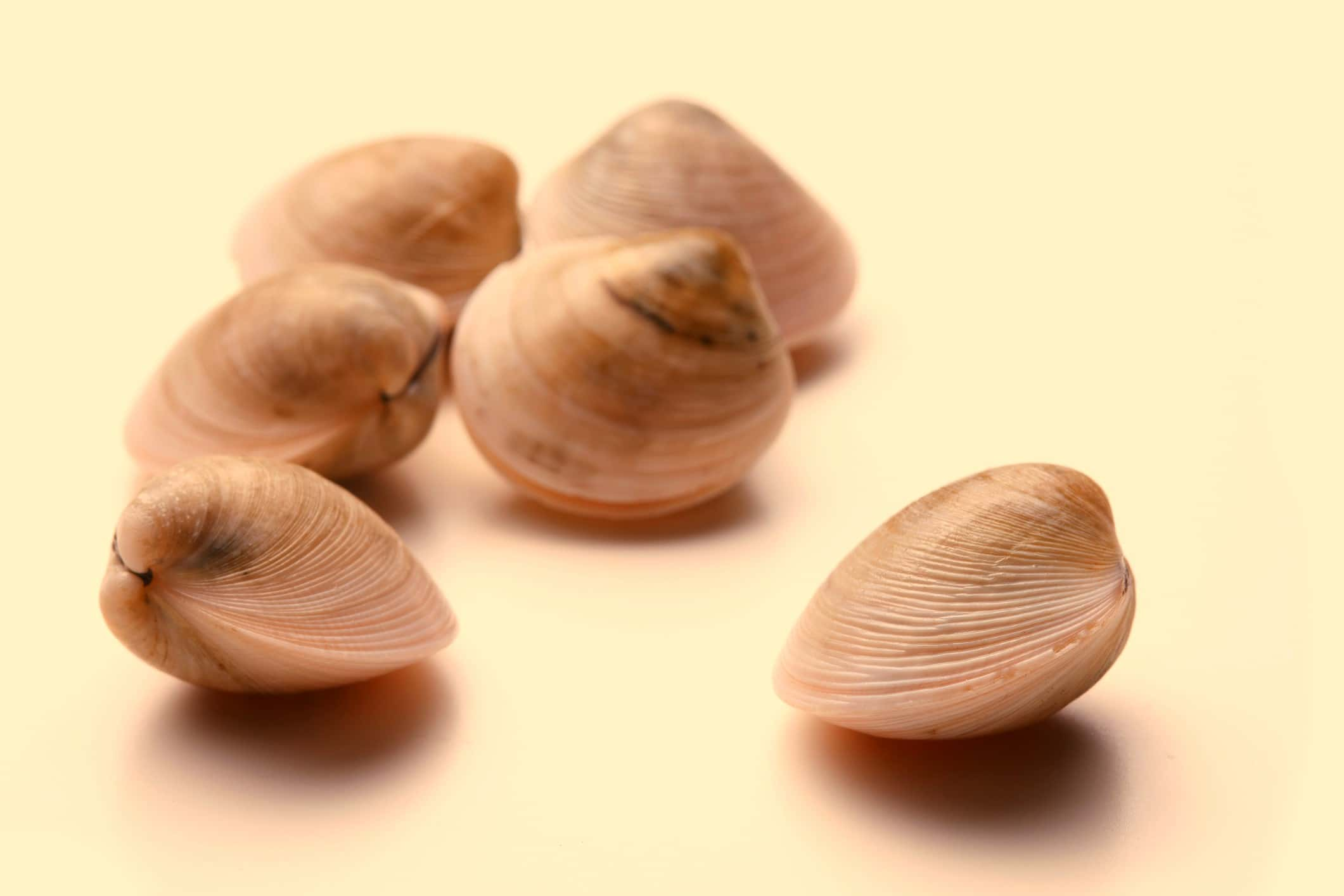“Science is not only a discipline of reason but, also, one of romance and passion.”
-Stephen Hawking
For better or for worse, many of us associate intelligence with scientific knowledge. So if you're looking to appear intelligent at your next social gathering, do your best to memorize these mindblowing bits of trivia. You'll be showing off your big ol' brain in no time.
Scientific Facts
47. Say What
Water is capable of freezing and boiling at the same time. Thanks to it's "triple point," when the temperature and pressure are just right, a substance can exist in all three states at the same time.
46. Tough As Nails
If you're ever in need of a makeshift bullet-proof vest, look no further than the hairs on your own head.
Pound-for-pound, human hair has a similar strength ratio to Kevlar (that's the bullet-proof stuff).
A full head of hair on a human is capable of supporting 12 tons of weight.
45. That's Metal
It's been known to "snow" metal on Venus.
Two types have been found, which scientists have called galena and bismuthinite.
44. Not Exactly
Sometimes the pursuit of scientific accuracy is, well, not an exact science.
Take the case of Franklin Delano Roosevelt. FDR was long thought to have been afflicted with polio in his youth, which was believed to have been the cause of his need for a wheelchair. However, recent
43. So mysterious…
It is scientifically proven that a woman will find a man sexier if he wears a pair of sunglasses. This is because sunglasses make your face appear more symmetrical and can make you appear mysterious. Both of which can increased your perceived attractiveness. (10)
42. The Moon Diet
If you lived on the moon, you would weigh a lot less than you do now. Gravity on the moon is a mere sixth of the gravity on Earth. This is because the moon has only 1% of the mass of Earth. A human’s weight will vary depending on what planet they are on.
41. Amazing Brain Power
The human brain takes in 11 million pieces of information every second, but only is aware of 40.
40. Hungry Hungry Seahorses
Since seahorses don’t have stomachs, they have to eat often. They just have intestines which quickly absorb and process their food.
39. You Spin Me Right Round
The planet earth currently spins at a rate of 1,000 miles per hour, and travels through space at 67,000 miles per hour. To put this in perspective, a jumbo jet's top speed is about 620 miles per hour.

History's most fascinating stories and darkest secrets, delivered to your inbox daily.
38. Sweet Preserves
Honey is one food that is not capable of spoiling. It is possible to safely eat honey that is thousands of years old. FYI, the oldest honey ever found was in ceramic jars discovered in the tomb of a noblewoman in Georgia (the country), not far from Tbilisi. It was 5,500 years old, and as far as we know, no one decided to eat it.
37. Occupation Titles
The word "scientist" isn't all that old. As far as we can tell, it didn't enter common usage until the year 1833.
That means that some of the most famous and influential scientists of all-time would have no idea what the term "scientist" even meant. In the days of Isaac Newton, for example, men who explored the laws of nature were often referred to as "natural philosophers".
The term scientist, meanwhile, was coined by a scholar named William Whewell, who was studying at Cambridge at the time. He proposed the new title as a parallel to "artist", reasoning that if a person who advances the world of art is an artist, then a person who advances the world of science ought to be a scientist.
36. Never Too Young
In 2012, a 10 year-old child accidentally discovered a new, theoretical molecule in science class.
It was called tetranitratoxycarbon. The class was doing the all-too-common ball and stick activity where students build models of molecules. Ten-year-old Clara Lazen assembled a complex model, and asked her teacher if it existed. Unsure of the answer, the teacher sent a picture to a chemist friend who cross-referenced the picture with all known databases and confirmed that the molecule was unique--i.e. had not yet been created--and also theoretically possible. Tetranitratoxycarbon has not yet been synthesized, but is expected to have explosive properties and be too thermally unstable for practical use.
35. A Little Alchemy Perhaps
The scientific method of transforming a venom into a painkiller is called "toxineering." But wait, they don't do that! Yes, they do--the venom of the Peruvian green velvet tarantula can be an effective and non-addictive alternative to opioid painkillers.

34. Powered From Pee
Scientists have found a few multiple uses from a rather gross, but natural product. Urine. Not only have scientists devised a way to charge mobile phones from urine, but also have managed to grow teeth from urine too. Yep, hopefully, those teeth won’t be for dentures.
33. Solar Power
Need another thing to worry about?
Scientists speculate that a single, badly-timed solar flare could pelt Earth with enough energy to knock-out power across the globe, potentially causing trillions of dollars in damage. One solar flare has an energy release equivalent to the energy of over one million 100-megaton atom bombs.
That kind of incident is pretty rare, but it's not unheard of. In fact, a solar storm just like that happened in 1859, before most electronics became commonplace. Scientists believe that if that storm were to happen today, Earth would experience a planet-wide blackout.
32. Giving The Sun A Run For Its Money
A lightning bolt is astonishingly 5 times hotter than the sun’s surface.
To put it in the most delicious way possible: a single lightning bolt has enough energy to cook 100,000 pieces of toast.
31. No Need To Binge
Brain cells experience a reaction to alcohol consumption within a mere 6 minutes. Alcohol is able to cross the blood-brain barrier, which means it can actually touch brain cells directly. This helped perpetuate the idea that “alcohol kills brain cells,” which is somewhat of a myth anyway: moderate alcohol use doesn't kill brain cells, while rampant abuse can damage the brain.
Either way, dead brain cells used to be ultra scary because scientists believed that once brain cells died, they never came back. New research suggests that some areas of the brain are regenerative. Does this mean that you can drink as much as you want? Nope, alcoholism still kills people, folks.
30. Vitamins In A Storm
Rain does contain vitamin b12, but this commonly-touted fact does not mean rainwater can be a useful source of b12. The average raindrop contains from 500,000 nanograms to 70,000,000 nanograms, which is an insignificant amount.
29. A Natural Defender
Sunflowers don’t just produce delicious seeds and beautiful flowers, they can also be helpful with cleaning up radioactive waste.
28. Hard Headed Bird
When a woodpecker strikes at a tree, it’s head endures 1,000 times the force of gravity. So how the heck do they survive? Plate-like bones with a "spongy" structure in the skull help distribute the incoming force, thereby protecting the brain. They also have a "third inner eyelid" that prevents their eyes from popping out.
27. Too Cool
A fire can be started with ice. The trick? Carve the ice into a lens that focuses the sun's rays, much like a magnifying glass.
26. Before You Reach For The Hand Sanitizer
There are 10 times more bacteria cells within the human body than body cells.
Thankfully, most bacteria are beneficial to the human body, and help to keep things in equilibrium.
25. Painkiller
In 2006, researchers at Pasteur Institute in Paris made a pretty shocking discovery: Human saliva contains a naturally-synthesized painkiller that is six times more powerful than morphine.
It's called opiorphin, and it's a pretty big deal. Substances that work as natural painkillers are relatively rare. Although it's been a few years now, scientists are still hoping to find a way to harness the power of our spit.
In the meantime, if you have a friend who's in serious pain, just don't try to lick them until they feel better. It's just not gonna work.
24. Friendly Connections
Friends share more DNA than strangers. That's right, geneticists discovered that unrelated friends have 1% of genes that match, which is about the same as fourth cousins (individuals who share great-great-great grandparents).
23. Talk About Complex Life Forms
The potato has more chromosomes than a human being. Tomatoes have more genes than a human. And bananas share 50% of their DNA with humans. Things to make you go hmm…
22. A Gassy Situation
A human being generates an average volume of 476 to 1491 ml of farts daily. Hold your nose.
21. Bring On The Sunshine
The sun is over 400 times farther away from our planet than the moon. It also takes 8 minutes and 20 seconds for the light of the sun to reach earth.
20. Antidote Somebody
There are around 173,000 species that are venomous on planet Earth. This ranges from lizards, snakes, spiders, and fish.
P.S. Ever have trouble distinguishing between venom and poison? Here's a handy tip, according to WideOpenPets.com: "Poison and venom are unique in their method of delivery. Poison is secreted, making ingestion or touch a requirement of the negative--poisonous--consequences. This is why people are said to get food poisoning, not food venoming. On the other hand, venom is injected, such as with the bite or sting of an animal."
19. Born To Be Astronauts
We've all seen the movies: if you're ever thrown out into the vacuum of space, you can basically expect to disintegrate, right? Or your blood will boil, or something.
Not true! Turns out, we're made of tougher stuff than Hollywood seems to think. For example, although many liquids do boil in open space, our blood is kept in check by our circulatory system and would, therefore, be OK. Freezing isn't a concern either, as a vacuum actually acts as a pretty good insulator.
It's not all good news though: your death would still be pretty gruesome. The lack of air will render you unconscious in about 15 seconds... before you asphyxiate and die in about a minute. Then your body would float alone through the vast emptiness of space until... Look, it gets ugly. That's all we'll say about that.
18. Please Don’t Go
The moon is slowly drifting away from our planet, by about 1.48 inches, or 3.78 centimeters every year.
17. Space Is Insane
Ever wondered what happens when a star meets a black hole? Hint: it doesn't end well for the star.
As soon as the star encounters the black hole, it begins to be sucked into the vortex, spraying out a trail of plasma that extends for hundreds of lightyears in all directions. Then, in the words of researcher Suvi Gezari, "When the star is ripped apart by the gravitational forces of the black hole, some part of the star's remains falls into the black hole, while the rest is ejected at high speeds"
Pretty gnarly.
16. No Middle Earth
If a tunnel could be drilled straight through the planet, it would take exactly 42 minutes and 12 seconds to "fall" to the other side. It would take you 21 minutes to "fall" to the Earth's center, with gravity causing you to accelerate. Then you would continue your journey toward the other side, with gravity slowing you down as you go. You would then rinse and repeat, for all of eternity.
15. Not So Light As A Feather
A cumulus cloud weighs about as much as 80 elephants.
14. Getting Around
The average human being will walk a distance equivalent to three times around the world, just within their lifetime.
13. Strongman Of The Natural World
Gonorrhea bacteria is one of the strongest living organisms on the planet. They are capable of pulling 100,000 times their body weight.
12. Mouth Guard Please
A person eats an average of 430 bugs annually, by accident. People who are allergic to eating chocolate typically also have an allergy to insects like roaches.
11. Dust In The Wind
Human beings shed about 40 pounds of skin in their entire lifespan. Human skin gets completely replaced about 900 times in life. Most dust consist of dead skin cells. Feeling itchy yet?
10. Tough As Fins
Female sharks have thicker skins than their male counterparts. Scientists think it’s because males like to bite females during mating.
9. Is That Meat Ready?
The discovery of fire changed the way we're built.
We began cooking food on controlled fires around 790,000 years ago— which meant the average human was soon consuming far less dangerous bacteria. Turns out, less raw meat = less grossness. That soon led to shorter human digestive tracts, as there was less of a need to process foods. The increase in healthy meat consumption also led to more energy available, which evolution translated into taller bodies and larger brains.
Basically, if you're more than 4.5 feet tall and have a big enough brain to read this sentence, you've got fire to thank. Just, you know, maybe say thank you from a distance...
8. Disappearing Bones
A human baby has 99 more bones than an adult.
A baby's skeleton is mostly made up of cartilage. As a person grows up, most of this cartilage turns into adult bone through a process called ossification. This process results in the fusing of certain bones. Consequently, newborn babies have around 305 bones, while an adult has just 206 bones.

7. Recruit For K.I.S.S.
The Central American salamander, or Bolitoglossa Dofleini, is capable of extending its tongue more than half the length of its body, in 7 milliseconds flat.
Gene Simmons might be in for some competition.

6. Nice Platypus
The platypus, with its famously strange appearance, is a classic childhood favorite. Silly name + silly looks = every kid's most beloved animal.
But the platypus is hiding a deadly secret: The male platypus has sharp spurs on its hind feet that can produce a toxic venom. A well-aimed strike from a full-grown male platypus can prove fatal to a dog.
5. Metal Gear Liquid
Mercury is the only metal on the planet that stays in a liquid state at room temperature and standard pressure. This is because of weak bonds between mercury atoms.
Another, not-so-fun fact about mercury? It is incredibly toxic. In fact, mercury is responsible for Mad Hatter Syndrome, a neurological disorder that became common in the 17th century amongst those who used mercury to treat animal furs. One profession that worked with mercury often? Professional hat-makers.
Even today, those who are forced to work with mercury often (such as construction or factory workers) are at a high risk of mercury poisoning, and can develop symptoms headaches, depression, and wild personality shifts.
4. The Monster Study
You know an experiment is bad when it gets dubbed “The Monster Study.” That’s what colleagues called Wendell Johnson and Mary Tudor’s experiments on 22 children from an orphanage in Iowa. A speech pathologist, Johnson wanted to see how feedback affects children’s speech development. His team told children who had stutters that their speech was fine to see how it affected them, but also told children whose speech was perfectly normal that they had a terrible stutter and needed to work to fix it immediately. Children from the latter group became extremely self-conscious about their speech, and many of them had severe speech problems for the rest of their lives.
3. How can you tell if a person is attracted to you?
Although there are no 100% accurate telltale signs that someone is attracted to you, there are many subtle behaviours that have been linked to someone showing attraction including:
Raising their eyebrows when they first look at you.
Parting their lips while you make eye contact.
Smoothing or fidgeting with their clothing while talking to you.
Grooming one’s hair, either fixing it or messing it up.
Letting you see them “check out” your body.
Standing with their hands on their hips (more common with men) as it makes them appear larger.
Flexing, or standing in a position that shows off the best features of one’s body.
While sitting opposite from you, the person (especially true for men) will spread their legs open.
While standing, leaning in when talking with you or sitting on the edge of their seat to lean in closer.
Soft touches to your elbows, forearms, and occasionally the small of the back.
If drinking, taking frequent sips of their beverage, or if smoking taking more frequent puffs from their cigarette.
Touching their face frequently during a conversation.
2. Common Fantasies
The most common sexual fantasy, which as actually shared by both men and women, is to have sex in a romantic location. 84.9% of women fantasize about this, and 78.4% of men do too, making it the most common sexual fantasy when looking at both genders together.
Special thanks to Wilson’s Sex Fantasy Questionnaire for providing this data.
That said, while it is the most common fantasy for women and the most common fantasy in general (adding male and female answers together), it’s not the most common male fantasy. The most common male fantasy involves “taking part in oral sex,” with 87.6% of male respondents saying this was something that pushed their buttons.
1. Oops, My Mistake
The oldest known animal ever to grace the face of the Earth lived from 1499 until 2006. It managed to survive 507 years on the planet, through wars and empires and some of humanity's greatest moments... until scientists accidentally killed it.
Ming was a Quahog mollusk, of the species Arctica Islandica. It was given the name "Ming" for the Chinese dynasty that was ruling when it first appeared, more than 5 centuries ago.
Researchers who first discovered Ming decided to crack the poor mollusk open, in order to inspect the rings inside its shell and get a better sense of how old it was. This, unfortunately, meant killing it. Even more tragic? In the end, scientists determined that a more accurate age could be gotten by counting the rings outside Ming's shell. Which means they could have done it without Ming needing to die.
RIP Ming-- gone far too soon. Only the good die young.























































